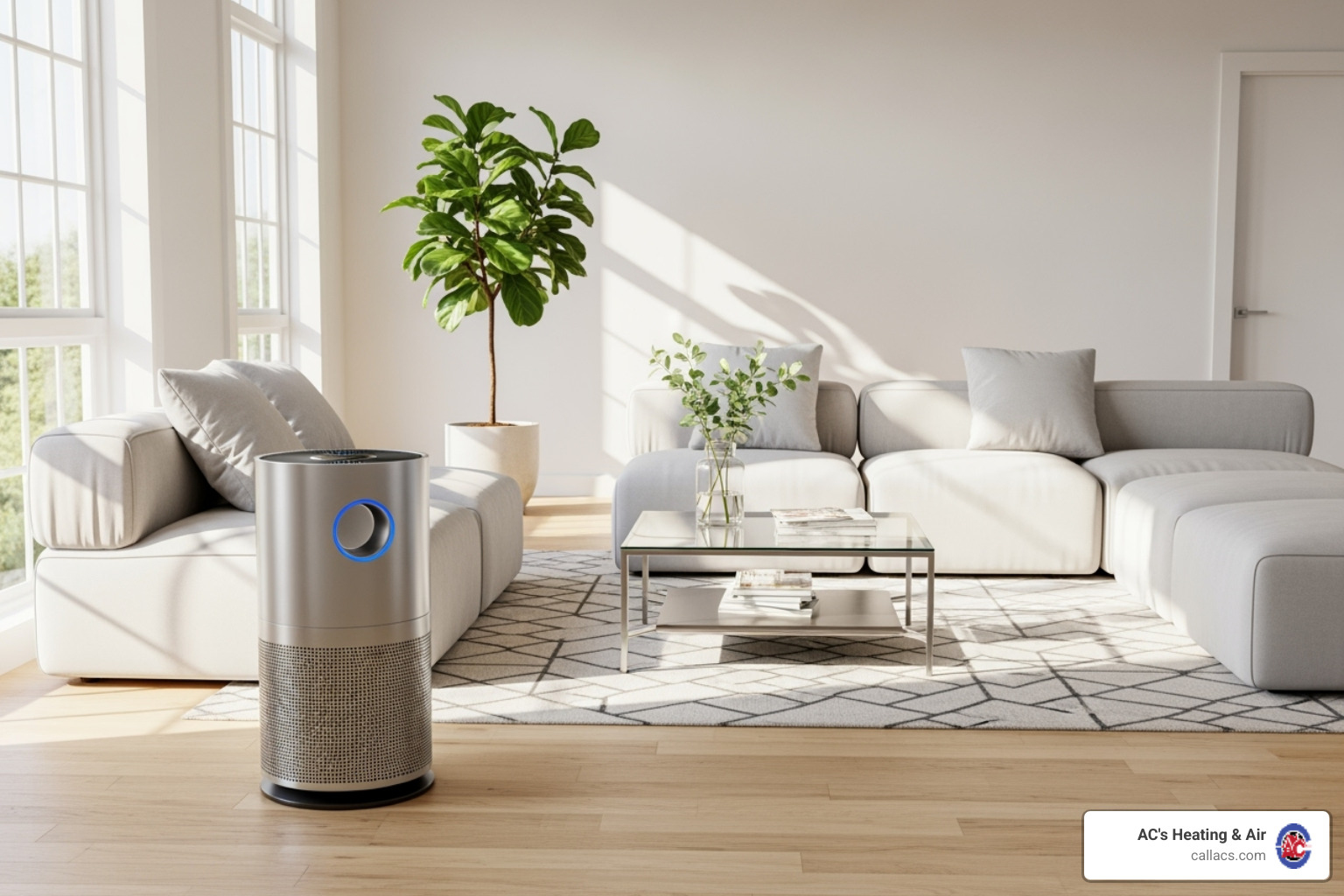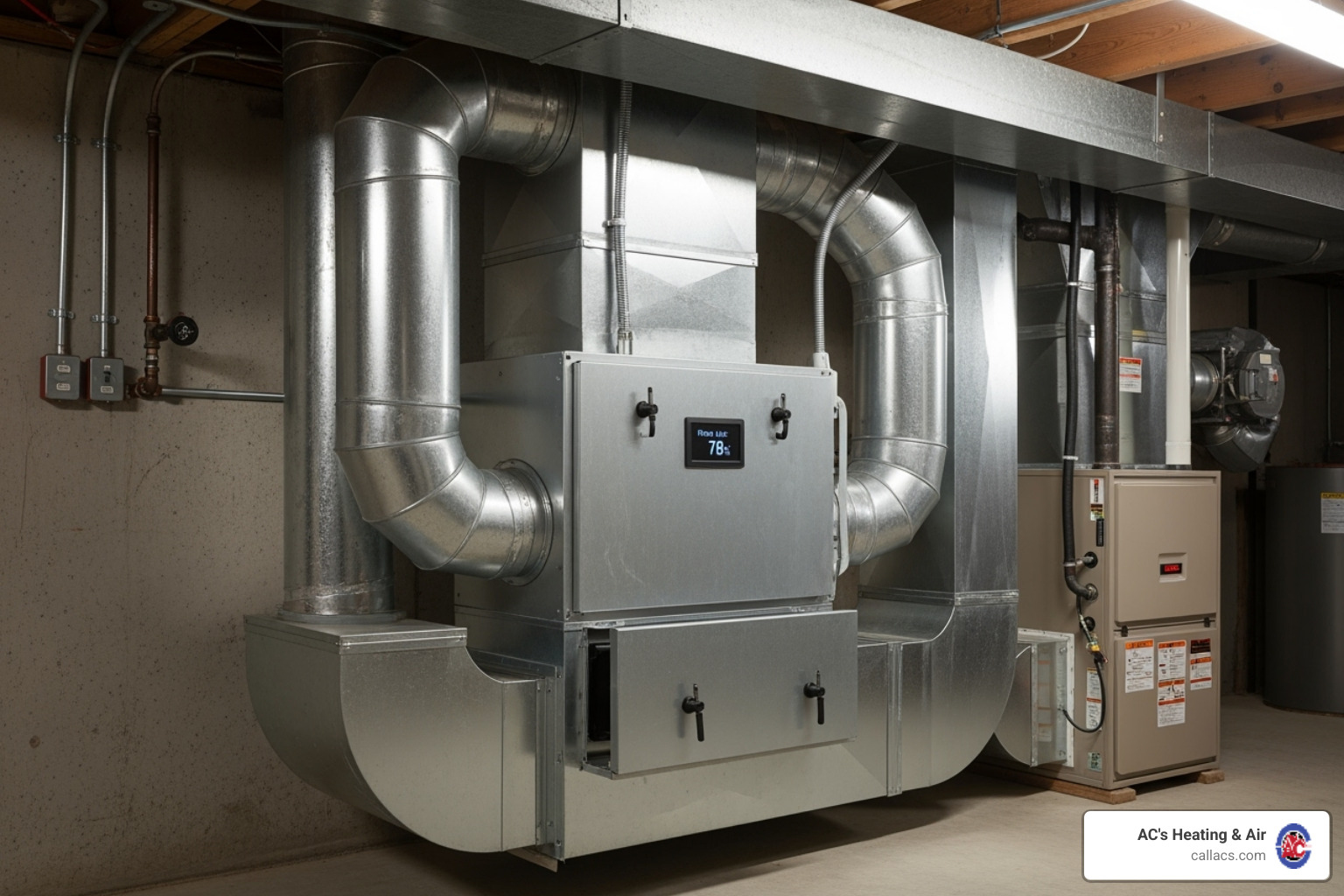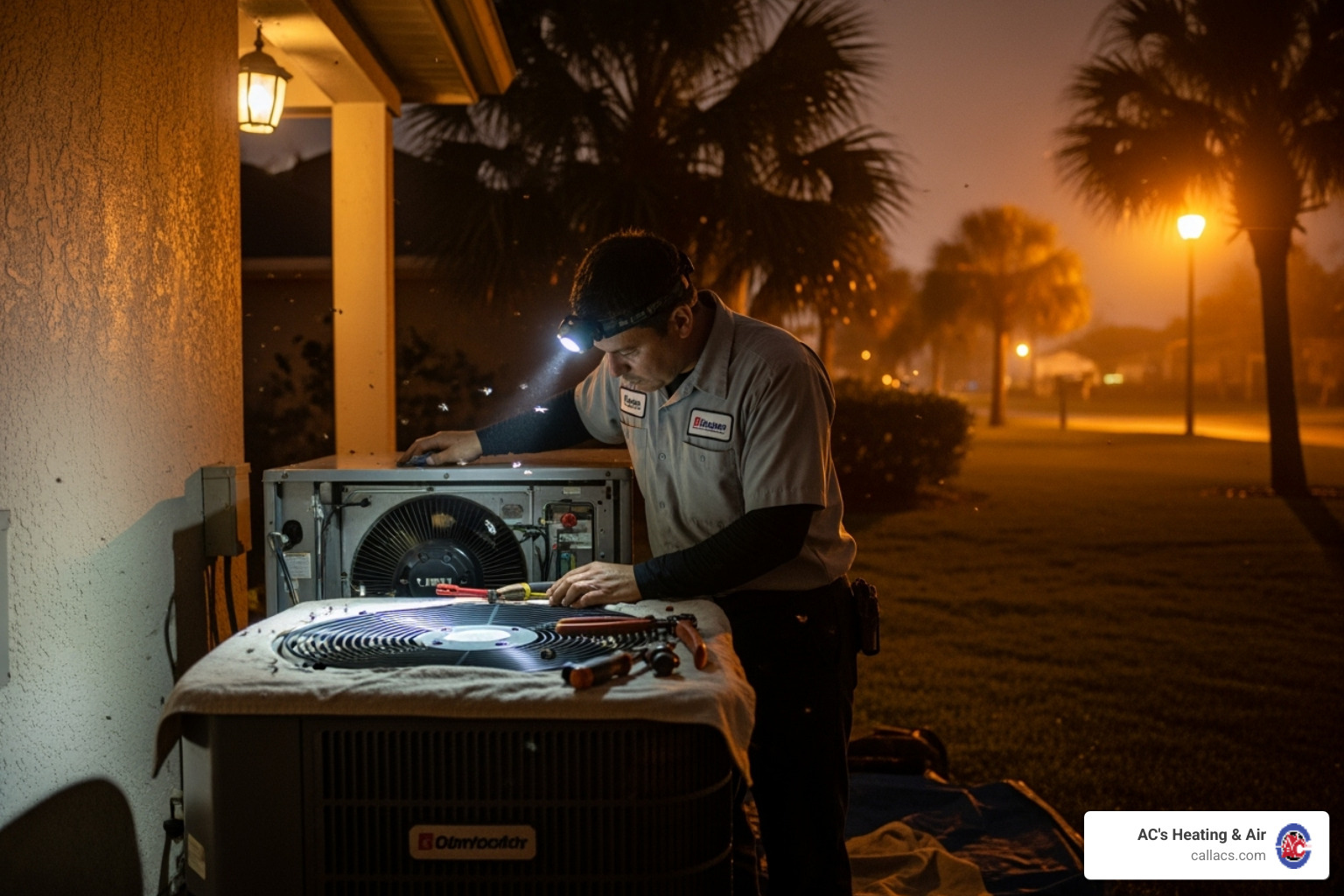HVAC Hiccups? Fix 'Em Yourself with These DIY Tips
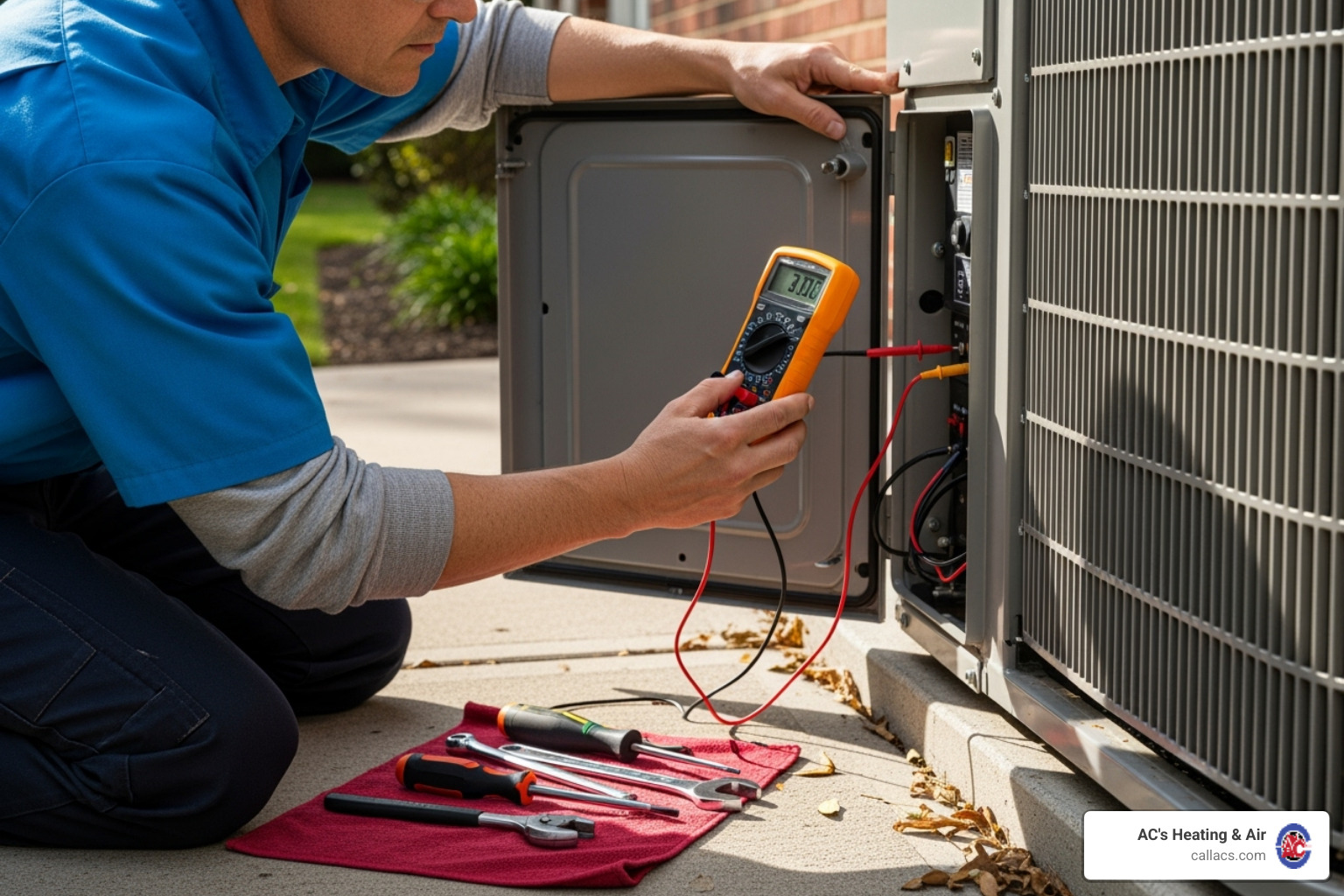
Why DIY HVAC Troubleshooting Can Save Your Day (and Your Wallet)
DIY HVAC troubleshooting can solve many common air conditioning and heating problems without waiting for a technician or paying service fees. When your HVAC system fails in the Florida heat, many issues have simple solutions you can handle yourself with basic tools.
Here's a quick troubleshooting checklist:
- Check your thermostat: Verify settings and replace batteries if the screen is blank.
- Inspect air filter: Replace if dirty (every 1-3 months).
- Reset circuit breaker: Flip the HVAC breaker off, then on.
- Check outdoor unit: Clear debris and ensure 2-foot clearance.
- Verify vents are open: Ensure all vents are open and unblocked.
- Call a professional: If these steps don't solve the problem.
From tripped breakers to dirty air filters, many common AC repairs can be tackled by homeowners. A dirty air filter alone can increase energy bills and reduce indoor air quality. However, safety must come first. While some fixes are straightforward, others involve electrical components or refrigerant that require professional expertise. Knowing when to DIY and when to call a pro saves you money and prevents costly mistakes.
With over 20 years in the HVAC industry, I've seen how a few simple, safe steps can get your system running again. Let's walk through them.

DIY HVAC troubleshooting helpful reading:
Safety First: What to Do Before You Touch Anything
DIY HVAC troubleshooting can save time and money, but only if done safely. Before touching your system, you must cut the power to avoid electrical shock.
First, turn off the power at the source. Go to your main electrical panel and find the circuit breaker for your HVAC system (often labeled "AC," "Heat Pump," or "HVAC"). Flip the breaker to the "off" position. For an extra layer of safety, also turn off the disconnect switch, which is a small electrical box located next to your outdoor AC unit.
Once the power is off, use basic safety gear like insulated gloves and safety glasses. Also, consult your system's user manual for model-specific safety information. A few minutes of prep can prevent serious injury and costly damage from electrical problems that damage HVAC systems.
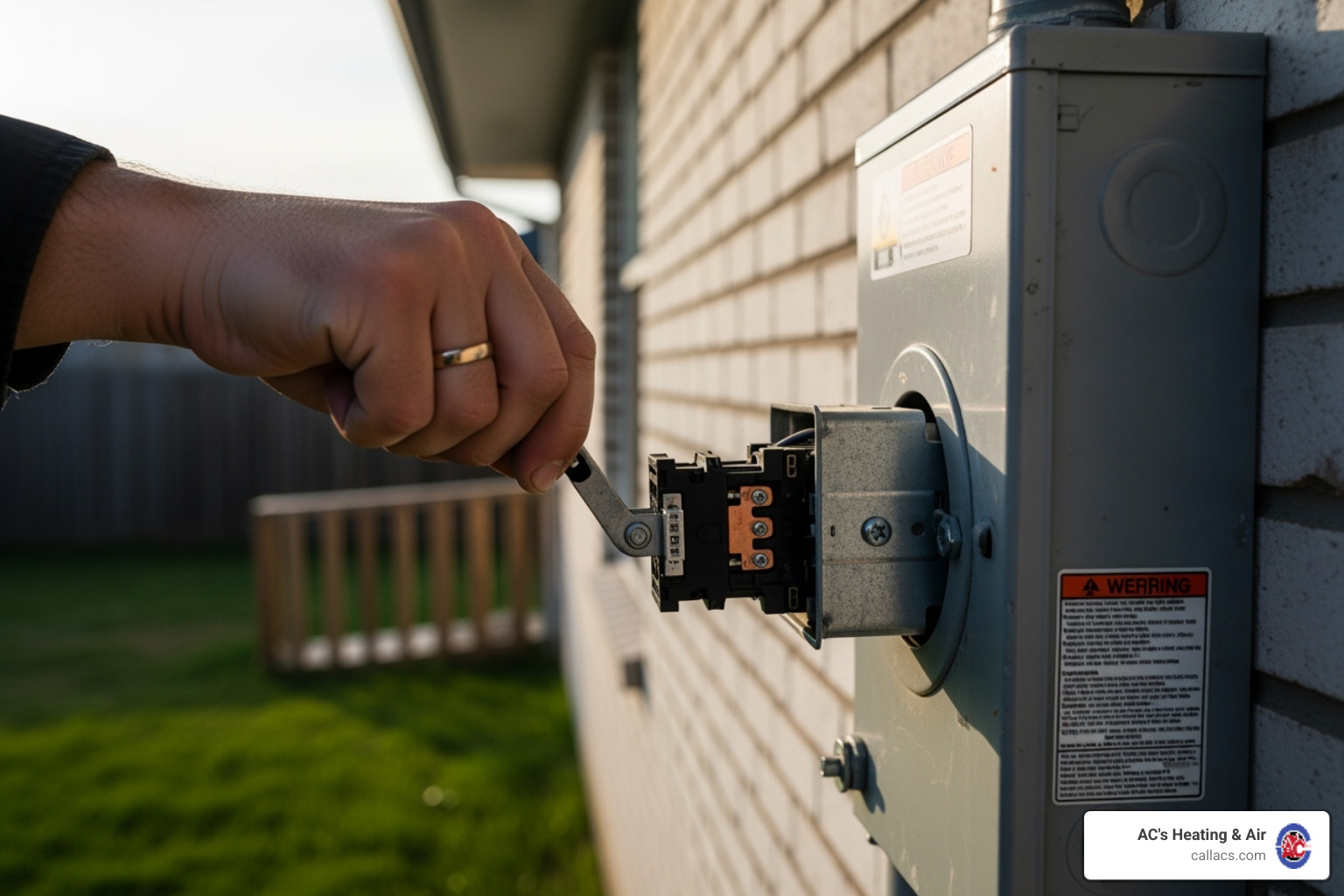
Checking and Resetting the Circuit Breaker
A surprising number of our service calls are for a tripped circuit breaker. It's an easy fix that can get your system running in minutes. The breaker is a safety device that cuts power during an electrical fault to prevent damage.
To reset it safely:
- Locate your home's electrical panel and find the HVAC breaker. If it's tripped, it will be in the middle or "off" position.
- Push the breaker firmly to the full "off" position, then flip it back to "on." It should make a solid click.
After resetting, wait 5 to 10 minutes. Most modern HVAC systems have a built-in safety delay to protect the compressor from damage caused by short cycling.
Warning: If the breaker trips again shortly after you reset it, do not keep flipping it on. This indicates a serious electrical problem, such as a failing motor or wiring issue, that requires professional attention. Stop and call a technician.
The Starting Point: Simple Checks for Common Problems
After covering safety, let's dive into the fixes. These simple first steps in DIY HVAC troubleshooting solve a surprising number of issues without any special tools.
Essential DIY HVAC Troubleshooting for Your Thermostat
Your thermostat controls your entire HVAC system, so it's the first place to check.
- Check Settings: Ensure the system is set to "Cool" or "Heat" and the fan is on "Auto." Setting the fan to "On" will make it run constantly.
- Verify Temperature: For cooling, the set temperature must be lower than the current room temperature.
- Replace Batteries: If the thermostat screen is blank or malfunctioning, the fix is often as simple as replacing the batteries, which should be done annually.
If these steps don't help, you may have a more complex issue. For more details, see our guide on what to do when your AC Thermostat Not Working.
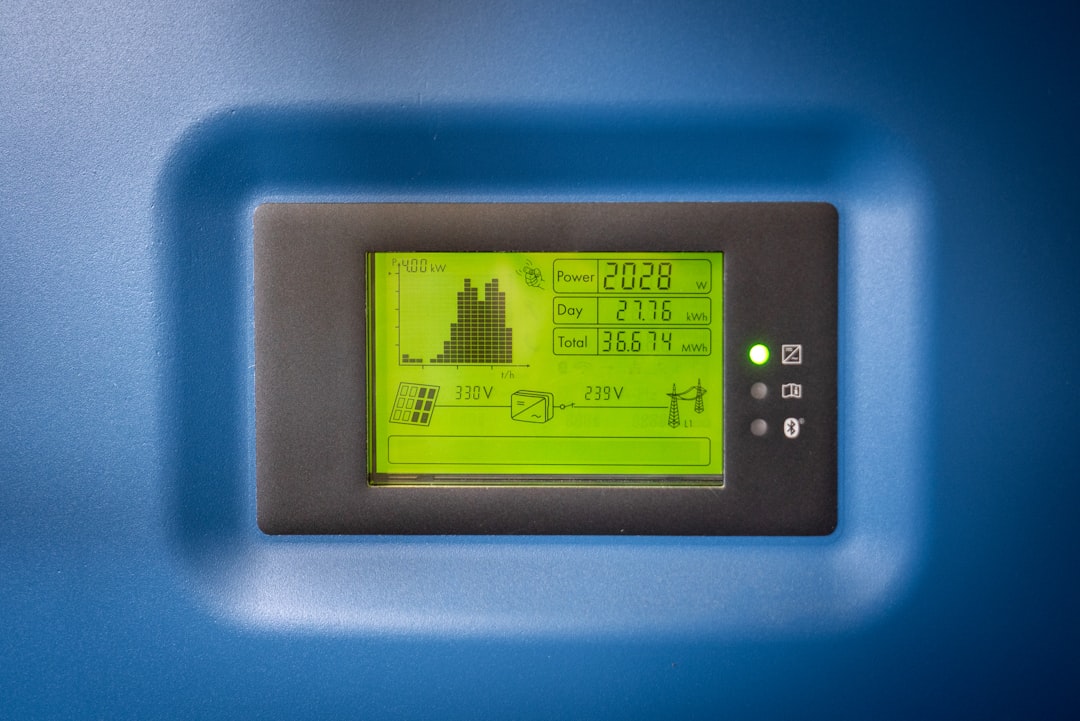
The Importance of a Clean Air Filter
A dirty air filter is one of the most common causes of air conditioning problems. When clogged with dust and debris, it restricts airflow, forcing your system to work harder. This leads to higher energy bills, poor air quality, and premature equipment failure.
Locate your filter (usually in a return air vent or inside the furnace unit) and inspect it. If you can't see light through it, it's time for a change. Most disposable filters should be replaced every 1-3 months, though you may need to change them more often in Florida, especially with pets or allergies. For a detailed schedule, see our HVAC Filter Replacement Schedule.
Why You Shouldn't Close Your Vents
Closing vents in unused rooms to save energy is a common myth that can harm your HVAC system. Your system is designed for a specific airflow balance. Closing vents creates pressure buildup in the ductwork, which can damage your blower motor and cause air leaks.
Check all registers in your home to ensure they are fully open and not blocked by furniture or rugs. Proper airflow is essential for efficiency and preventing damage from closed vents.
Intermediate Fixes: Getting Your Hands a Little Dirty
If the basic checks don't solve the problem, it's time for more in-depth DIY HVAC troubleshooting. These steps involve inspecting the main components of your system. Remember to turn off the power at both the circuit breaker and the disconnect switch before you begin.
Cleaning Your Outdoor Condenser Unit
Your outdoor AC unit needs to release heat to cool your home. When it's covered in debris, it can't work efficiently, leading to higher energy bills and poor cooling.
- Clear Debris: Maintain at least two feet of clearance around all sides of the unit. Remove any leaves, grass clippings, or overgrown bushes.
- Clean the Coils: Gently spray the condenser coils with a garden hose from the inside out to push dirt away from the unit. Be careful not to bend the delicate fins. You can use a fin comb to straighten any bent fins. For help with severely Damaged Coils On AC Unit, you may need a professional.
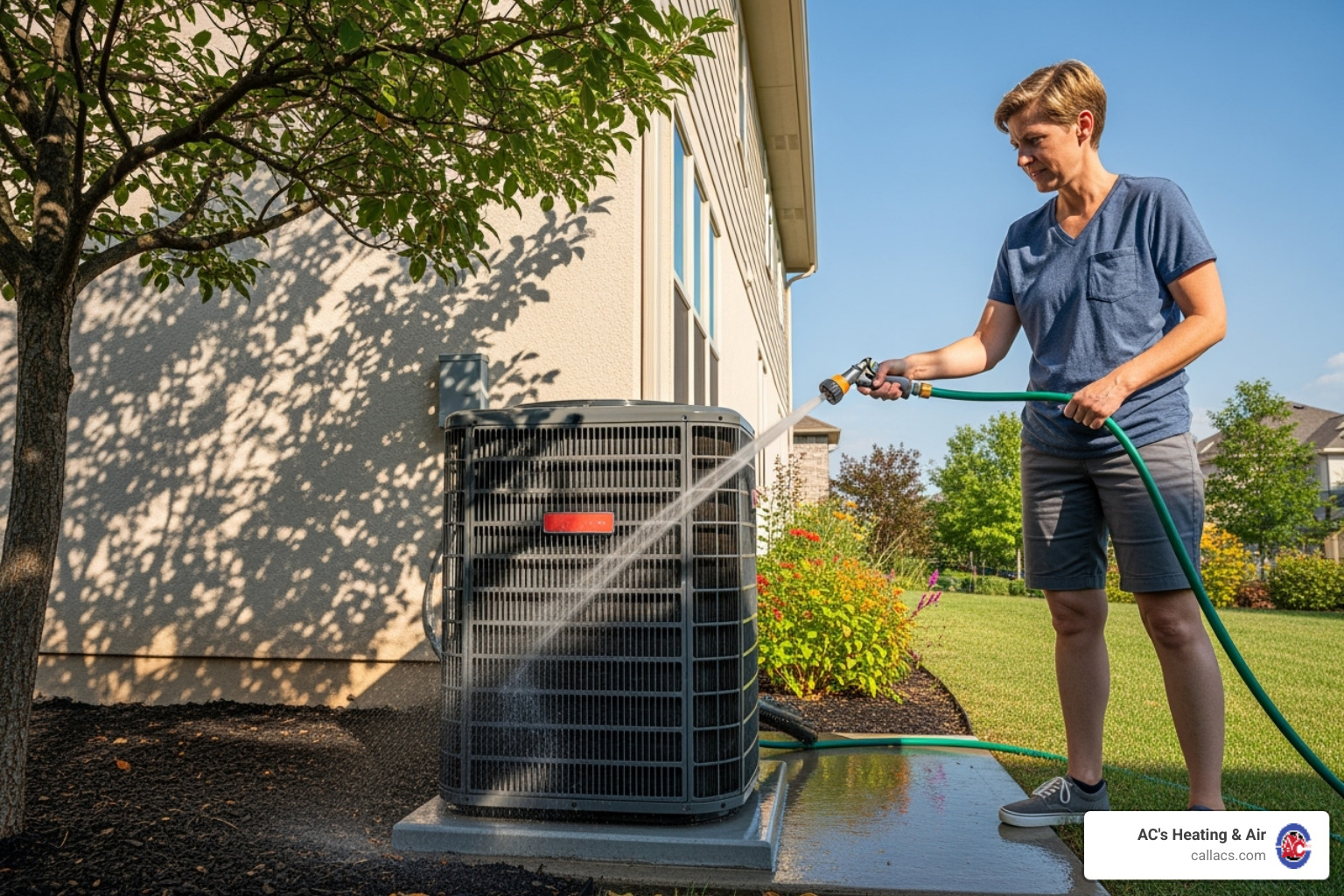
Dealing with Water Leaks and Frozen Coils
Water leaks around your indoor unit are common and often caused by a clogged condensate drain line. This line removes moisture your AC pulls from the air. If it clogs, water backs up and overflows.
If you see a leak, turn off the system immediately. You can often clear the clog by using a wet/dry vacuum on the end of the drain line (a PVC pipe outside your home) or by flushing it with a vinegar and water solution. Pouring a cup of vinegar down the line monthly can prevent future clogs.
Frozen coils on your indoor unit are a sign of a problem, usually restricted airflow (check that dirty filter again!) or low refrigerant. Turn off the system and let the ice thaw completely. If it freezes again after you've cleaned the filter and coils, you likely have a refrigerant issue that requires a professional. Learn more about What Cause AC to Freeze Up.
Decoding Strange HVAC Noises
Learning to identify unusual noises is a key DIY HVAC troubleshooting skill. If your system is making strange sounds, turn off the power and investigate.
- Rattling/Clanking: Usually a loose panel or fan blade.
- Squealing/Screeching: Often indicates a worn belt or failing motor bearings.
- Hissing: Could be a serious refrigerant leak that needs a professional.
- Whistling: Often caused by air escaping from leaky ductwork.
- Buzzing/Humming: Can signal an electrical issue, like a failing capacitor.
For a detailed guide, see our post on an Air Conditioner Making Noise.
Advanced DIY HVAC Troubleshooting: When to Proceed with Caution
This section covers advanced DIY HVAC troubleshooting involving electrical components. These repairs carry significant risks. Only attempt them if you are experienced and comfortable working with electricity. If you have any doubt, call a professional. Your safety is paramount.
Testing and Replacing the AC Contactor & Capacitor
The capacitor and contactor are two common failure points inside your outdoor unit. The capacitor provides the electrical jolt needed to start the compressor and fan motors, while the contactor is the switch that allows high-voltage power to flow to them.
Signs of failure include:
- Bad Capacitor: The outdoor unit hums but won't start, the fan isn't spinning, or the capacitor itself is visibly bulging or leaking.
- Bad Contactor: The outdoor unit does nothing at all, or you hear a click without the system starting.
To replace these parts safely:
- Turn off all power at the circuit breaker and the outdoor disconnect switch. Verify the power is off with a voltage tester.
- Discharge the capacitor. This is a critical safety step. Even with the power off, a capacitor stores a dangerous charge. Use an insulated screwdriver to carefully bridge the metal terminals. A small spark is normal.
- Take photos of the wiring before disconnecting anything.
- Remove the old component and install the new one, connecting the wires exactly as they were in your photos.
While these parts are inexpensive, a mistake can be dangerous or cause further damage. If you suspect deeper issues like compressor failure, it's time for professional HVAC Compressor Troubleshooting.
Know Your Limits: When to Call a Professional HVAC Technician
While DIY HVAC troubleshooting is great for simple fixes, it's crucial to recognize when a problem is beyond your scope. Attempting complex repairs without proper training can lead to personal injury, further system damage, or a voided warranty. Knowing when to call a professional is a key part of being a smart homeowner.
Red Flags That Demand an Expert
If you encounter any of the following issues, stop troubleshooting and call a licensed technician immediately:
- Refrigerant Leaks: Hissing sounds or oily residue near your coils indicate a leak. Handling refrigerant requires special certification and is not a DIY job.
- Persistent Electrical Issues: If a circuit breaker repeatedly trips, it signals a serious underlying problem that needs professional diagnosis.
- Compressor Failure: A compressor is the heart of your AC. Issues with it are complex and require specialized tools and knowledge.
- Gas Smell (Furnace): If you smell gas, evacuate your home immediately and call your gas company and an HVAC professional from a safe location.
- Frequent Breakdowns: If your system needs constant repairs, it may be nearing the end of its life or have a chronic issue that an expert should assess.
For these situations, you need fast, professional help. We provide Emergency Air Conditioner Repair throughout Central Florida, including Apopka, Winter Park, Orlando, and Winter Garden.
The Benefits of Professional Maintenance
While DIY tasks are important, they don't replace professional preventative maintenance. A regular tune-up is one of the best investments for your system's health and longevity. Our technicians perform in-depth checks that go beyond basic DIY, including verifying refrigerant levels, lubricating moving parts, and inspecting all electrical components.
According to ENERGY STAR, proper maintenance can improve efficiency and extend your system's lifespan. The key benefits include:
- Improved Efficiency: A well-maintained system uses less energy, lowering your utility bills.
- Longer Lifespan: Regular care helps your equipment last longer.
- Fewer Breakdowns: Catching small problems early prevents major, costly repairs.
- Peace of Mind: Knowing your system is in top condition provides comfort and reliability.
To keep your system running smoothly, consider our AC Preventative Maintenance services.
Frequently Asked Questions about DIY HVAC Troubleshooting
Here are answers to some of the most common questions we get about DIY HVAC troubleshooting.
How often should I really change my HVAC air filter?
The standard 1-3 month recommendation is just a starting point. In Florida, you may need to change it more often. Check your filter monthly, and replace it if you can't see light through it. Change it every month if you have pets, allergies, or during peak cooling season.
My AC is running, but the air isn't cold. What's the most likely cause?
This is a common issue. First, check for these simple problems:
- A dirty air filter restricting airflow.
- A dirty outdoor condenser unit that can't release heat.
- Closed or blocked air vents.
If you've checked these and the air is still warm, you may have low refrigerant, which requires a professional to diagnose and repair. For a full guide, see our post on AC Running But Not Cooling.
Is it normal for my AC to make a noise when it starts or stops?
A brief, quiet click or hum at startup or shutdown is normal. However, loud or persistent noises like banging, grinding, or squealing indicate a mechanical problem that needs immediate attention. Turn off the system and investigate or call a professional.
Conclusion
By following these DIY HVAC troubleshooting tips, you can solve many common issues yourself, from changing a filter to resetting a breaker. These simple fixes can save you time and money while keeping your home comfortable. They are also smart maintenance habits that extend your system's life and lower energy bills.
However, safety must always come first. Recognizing your limits is crucial. For complex problems involving electrical components, refrigerant, or major mechanical failures, the smartest move is to call a professional.
For expert HVAC service in Central Florida, the team at AC's Heating & Air is ready to help. We serve Apopka, Winter Park, Orlando, Winter Garden, and surrounding areas with reliable repairs and maintenance. When you've reached the limit of your DIY skills or need professional care you can trust, we're here to keep you cool.
Don't let HVAC troubles disrupt your comfort. Schedule your professional air conditioning service today.

